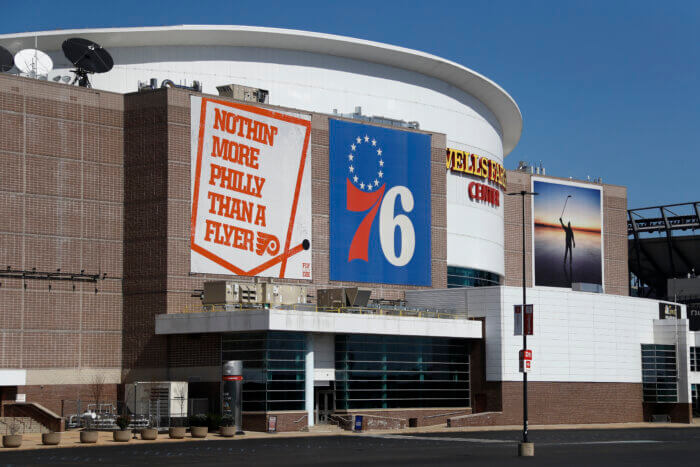 Penn’s Landing visitors cross old trolley tracks on Delaware Avenue. Credit: Paige Ozaroski/METRO
Penn’s Landing visitors cross old trolley tracks on Delaware Avenue. Credit: Paige Ozaroski/METRO
Joe Forkin was shocked at how many people rode bikes, walked or bused to the Delaware River Waterfront to visit its newest attraction, the pop-up Spruce Street Harbor Park.
“It just shows the shift in thinking from automobile to other modes,” he said.
Forkin, vice president for operations and development at the Delaware River Waterfront Corporation, said transportation planning has been a big part of future waterfront planning.
Five years ago, he said, local organizations researched whether a trolley running on existing rail lines along Delaware Avenue would help improve traffic to the waterfront. In the end, it was deemed unfeasible.
With new projects pushing forward — such as plans to link more than a dozen waterfront parks from Pier 70 to Pier 53 connected by the Delaware Trail — have re-ignited public discussions on a possible light rail system.
According to SEPTA, officials have not had any discussions with the Delaware River Waterfront Corporation about adding a trolley.
Byron Comati, SEPTA’s director of strategic planning, said the feasibility study asked questions such as: Does it make sense to put in a line that simply goes up and down Delaware Avenue all day?
“As a planner, there is a fair amount of attraction for a light-rail service,” he said, “But it has to connect up better. And just running north and south along Delaware Avenue in and of itself is not sufficient cause for that type of investment. You really need to link up some big origins and destinations, and it would be useful for it to link up with the existing light-rail system. And how would you do that?”
Forkin said the existing rail lines are privately held by the Philadelphia Belt Line Railroad.
“Who we’ve had discussions with about a rail line/passenger, light rail in some point in time,” Forkin said. “Either there or move to another part of Columbus Boulevard.”
“It’s a little bit I would say of a longer-term proposition because of ridership and the complications of right of way,” Forkin added. “It needs much more planning.”
Comati said those tracks are potentially useable, and were used by a tourist rail service about 10 years ago.
“But it’s in bad shape,” he said. “And if you were ever to put trolley’s on there you actually wouldn’t necessarily configure them that way. You may not want them in the middle of the road, you may want them on the sides of the road for easier access.”
Forkin said the group has spoken with SEPTA about adding more buses and even shuttle service to the waterfront in the interim.
But, Forkin said, if more people to choose to live on the waterfront, it might become a need.
“And at some point I think there will be that tipping point to say, ‘OK, this type of mass transit is needed.'”
Follow Tommy Rowan on Twitter: @tommyrowan





























